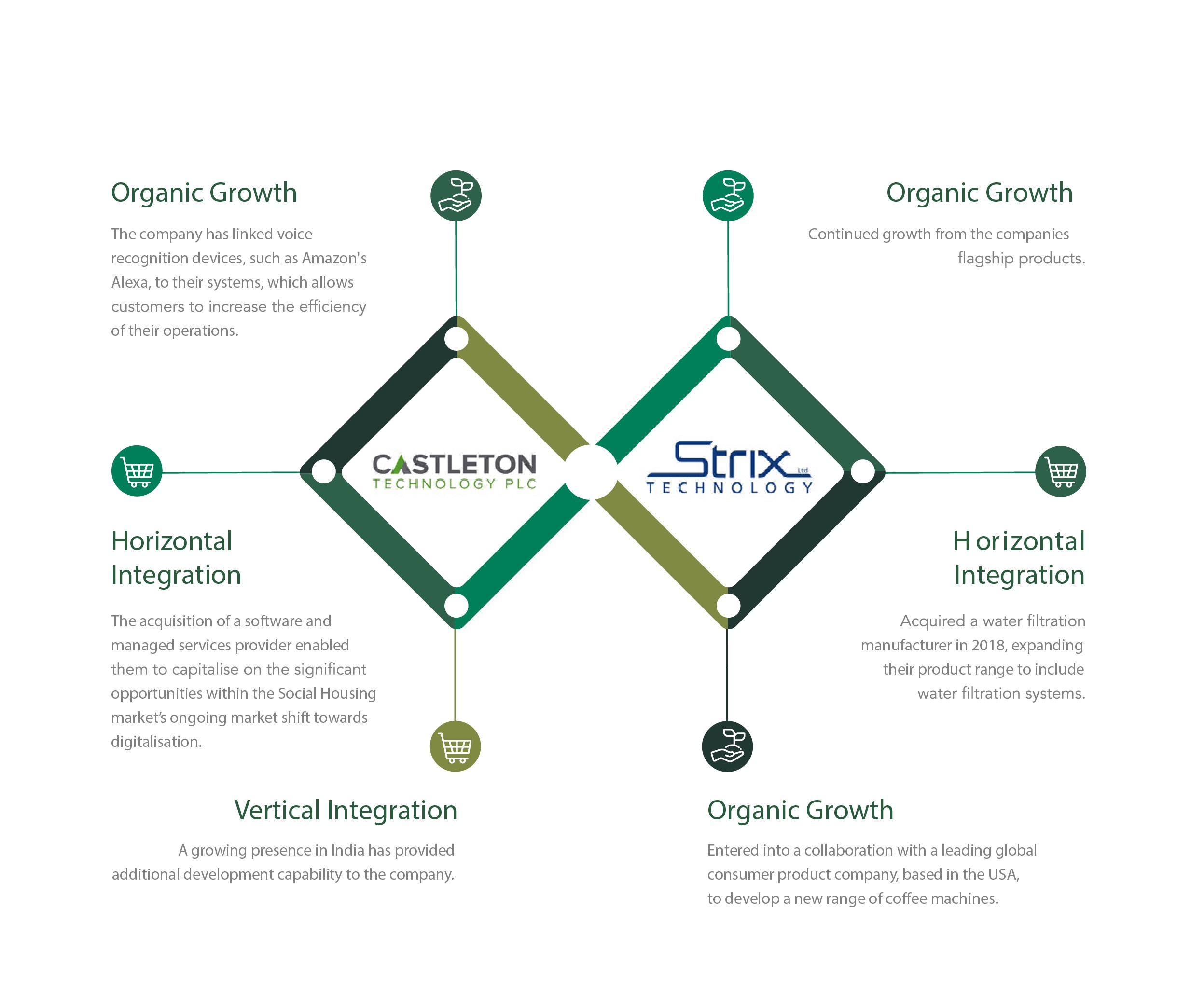The opportunities for companies to grow are set mainly by two factors. First, whether their market is in structural growth or is primarily a cyclical market, and second by how well-financed the company is.
Organic growth is the most potent engine for investors. Structurally growing markets present stronger investment cases as businesses can grow due to expanding opportunities and weaker competitive forces. This can give time for management to establish a niche, and to erect barriers to entry. It may require little incremental investment.
Management are likely to know their market well, often making organic growth less risky than acquisitive growth. Organic growth includes developing new products or taking on new customers in a new or under-penetrated market. Geographical expansion may also offer potential. Further examples are highlighted below:

Cyclical companies can grow organically but management must be careful not to expand at the wrong point of the business cycle. For example, a brick manufacturer would not want to install a new kiln just prior to the housing market stagnating or lending conditions tightening. In cyclical companies, investors must rely on management to be prudent over the long-term and to time their investments well.
The other determining factor in accelerating the growth of a business is a company’s financial resources. Highly indebted companies have their options restricted unless they can convince equity investors to provide them with more cash, however companies with cash on their balance sheet and the ability to borrow will have more flexibility in funding growth projects. We find that some analysts overlook the use of cash or debt-financing for growth, meaning that market forecasts can be exceeded.
If a company has the balance sheet flexibility to be acquisitive, the two main options are:
Acquisitions can be significant growth-drivers if they meet some of the criteria laid out above. Nevertheless, execution is important as working practices and cultures are aligned. The acquisition rationale and integration roadmap must be clear. A poor acquisition can distract management and set the overall business back, and research shows that the majority of acquisitions fail to create value for buyers.
In the next article in the series we will look at the importance of achieving sustainable returns on capital as businesses continue to invest for their future.